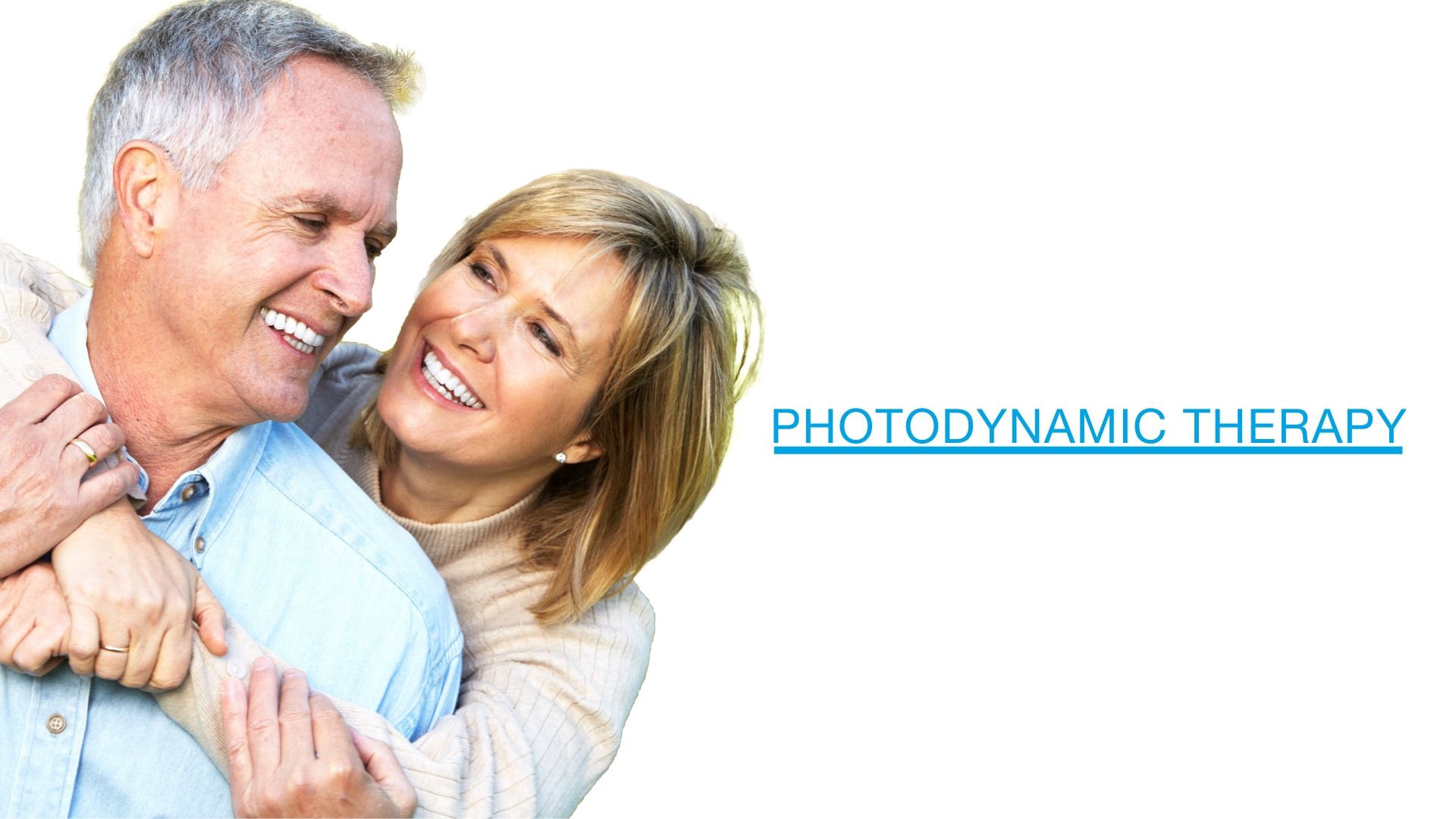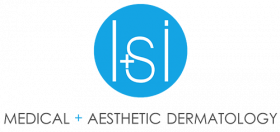
SCHEDULE A CONSULTATION
Schedule by phone at (973) 635-5050
or fill out the online consultation request
By submitting this form you agree to be contacted via phone/email/text
Photodynamic Therapy at the Laser + Skin Institute
At the Laser + Skin Institute, our providers believe that one of the most effective treatments for actinic keratosis (AKs), is a treatment called photodynamic therapy (PDT). We hope to answer some of the most commonly asked questions about PDT, and about the importance of treating AKs promptly and effectively.
What are actinic keratoses?
Actinic Keratoses (AKs) are rough, scaly patches on the skin, caused by excessive exposure to the sun that can sometimes progress into dangerous skin cancers. More than 5 million Americans live with these lesions, and far too many people ignore them, leaving them untreated. This can have serious consequences. Doctors estimate that 40% of squamous cell carcinomas, the second leading cause of skin cancer deaths in the US, begin as AKs. And without performing a skin biopsy, it can be almost impossible for a doctor to distinguish an AK from a squamous cell carcinoma. For this reason, 3 major medical groups, the American Cancer Society, the Skin Cancer Foundation, and the American Academy of Dermatology all recommend that people with AKs seek treatment for them immediately.
How do AKs become squamous cell carcinomas?
AKs sometimes can become larger and thicker. Doctors call this hyperkeratotic. These enlarged lesions may then progress to squamous cell carcinomas. Patients may notice increased redness, tenderness, itching, and burning. However, these symptoms can be the same for either AKs or squamous cell carcinomas. This is what makes distinguishing between the two so difficult without a biopsy. Left untreated, squamous cell carcinomas may become larger, go deeper into the skin, and eventually spread to other parts of the body. This results in thousands of skin cancer deaths each year, many of which could be prevented.
How likely are AKs to become squamous cell carcinomas?
It is impossible to predict if an AK will evolve into a squamous cell carcinoma, or at which point it will happen. Many doctors believe that AKs and squamous cell carcinomas are really the same condition at different stages of a continuing process. This process begins with minor cell damage and, over time, ultimately results in the cell becoming cancerous. These doctors believe that AKs occur in the early stages of the process; squamous cell carcinomas occur in the final stage. One thing, however, is certain: a significant percentage of AKs develop into squamous cell carcinomas. Estimates range from 10% to as high as 20% over a 10-year period.
Is there anything I can do to prevent AKs in the future?
Long-term exposure to the sun is the single most significant cause of AKs, so the best defense against them is a comprehensive sun-protection program. This includes wearing protective clothing and a wide-brimmed hat, avoiding the sun at midday when ultraviolet rays are strongest, staying in the shade as much as possible, and wearing a broad-spectrum sunscreen with a sun-protection factor (SPF) of at least 15.
What is Photodynamic Therapy?
Photodynamic therapy (PDT) is a special treatment performed with a topical photosensitizing agent called Levulan (5-aminolevulnic acid or ALA) activated with the correct wavelength of light. This is also known as ALA/PDT treatment. These treatments remove sun damaged pre-cancerous zones and spots called actinic keratoses. Sun damage, fine lines, and blotchy pigmentation are also improved because of the positive effect of Levulan and the light treatment. ALA/PDT treatment also has the unique ability to minimize pores and reduce oil glands, effectively treating stubborn acne vulgaris, acne Rosacea, and improve the appearance of some acne scars.
How Much Improvement Can I Expect?
Patients with severe sun damaged skin manifested by actinic keratosis, texture, and tone changes including mottled pigmentation and skin laxity may see excellent results. You may also see improvement of large pores and pitted acne scars. Active acne can improve dramatically.
How Many Treatments will it take to see “Best Results”?
To achieve maximum improvement of pre-cancerous (actinic keratoses) sun damage, skin tone and texture, a series of three treatments 2-4 weeks apart is the most effective. Some patients with only actinic keratoses are happy with just one treatment. More treatments can be done at periodic intervals in the future to maintain the rejuvenated appearance of the skin.
What are the Disadvantages?
Following PDT, the treated areas can appear red with some peeling for 2-7 days. Some patients have an exuberant response to PDT, and experience marked redness of their skin. Temporary swelling of the lips and around your eyes can occur for a few days. Darker pigmented patches called liver spots can become temporarily darker and then peel off leaving normal skin. (This usually occurs over 7 to 10 days). Repeat treatments may be necessary as PDT medicine is not an exact science.
What are the Advantages?
- Easier for patients than repeated topical liquid nitrogen, Efudex (5FU), or Aldara because the side effects are minimal, rapid healing, and only 1-3 treatments required.
- The ALA/PDT treatment at our clinic is painless versus liquid nitrogen, 5-FU, and Aldara.
- Reduced scarring and improved cosmetic outcome compared with cautery, surgery, and Efudex. Liquid nitrogen can leave white spots on your skin.
- Levulan improves the whole facial area treated creating all one color, texture, and tone rather than just spot treating with liquid nitrogen, cautery, and surgery.
In summary, PDT matches the “Ideal treatment” for photo-damaged skin:
- Well tolerated (essentially painless)
- Easily performed by a specialty clinic environment
- Non-invasive (no needles or surgery required)
- Excellent cosmetic outcome (particularly in cosmetic sensitive areas of the face)
Treatment Steps for PDT
- Patients who have a history of recurring cold sores (Herpes simplex type 1) should start oral Valtrex 500 mg tablets, one tablet daily for seven days-starting this prescription the morning of your PDT treatment. The prescription for this product will be ordered for you.
- Make sure your skin is clean and free of all make-up, moisturizers, and sunscreens. Bring hat, sunglasses, and scarf when appropriate to the clinic.
- You should purchase Aquaphor healing ointment for use at home after the treatment.
- You must sign a consent form.
- An acetone scrub is performed. This will enhance the absorption of the Levulan and to give much more even uptake.
- Levulan is applied topically to the whole area- whole zone to be treated (such as the whole face, back of hands, extensor part of the forearms).
- The Levulan is left on for a prescribed amount of time.
- The Levulan is activated with a unique spectrum of light beginning with low energy levels and takes 16 minutes to complete.
- Post-treatment instructions will be given to you to care for your improved skin.
- You should purchase Claritin 10mg and take one tablet the morning of your appointment, one that evening and one the following morning for a total of 3 pills. This helps to minimize swelling.
What should I do if I suspect I may have actinic keratoses?
To schedule an appointment with our Physicians, fill up the form below or call our scheduling staff at 973-635-5050.
SCHEDULE A CONSULTATION
Schedule by phone at (973) 635-5050
or fill out the online consultation request
By submitting this form you agree to be contacted via phone/email/text
SCHEDULE A CONSULTATION
Schedule by phone at (973) 635-5050
or fill out the online consultation request
By submitting this form you agree to be contacted via phone/email/text

